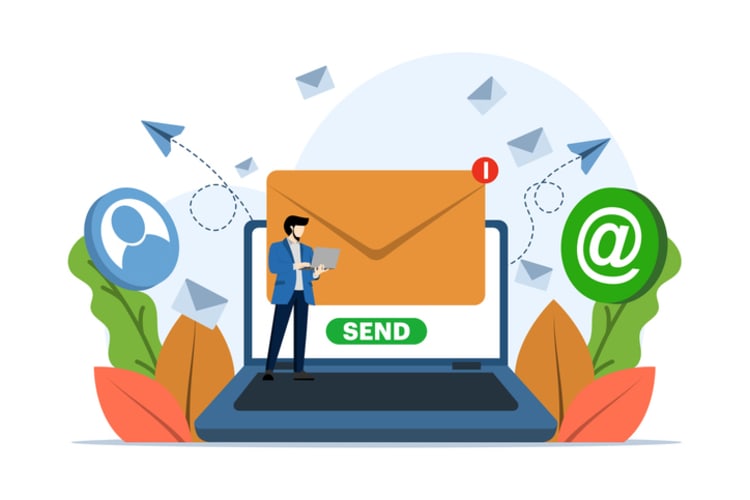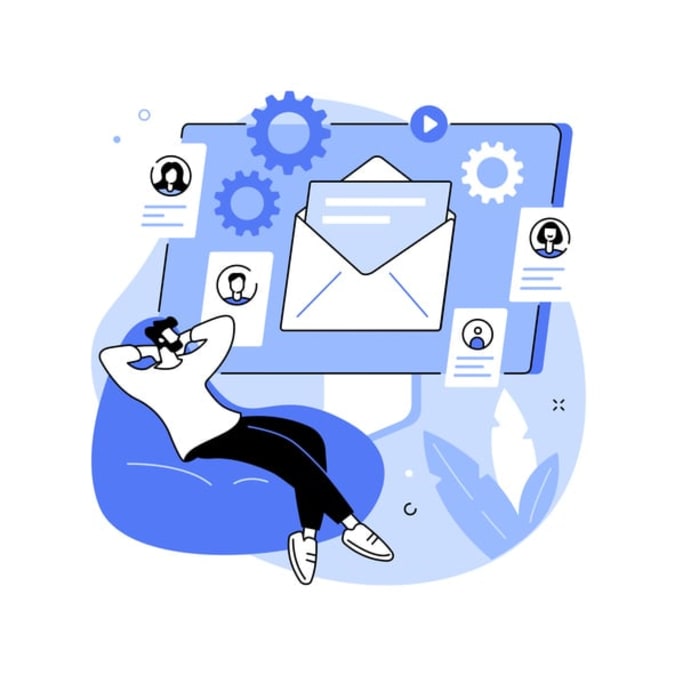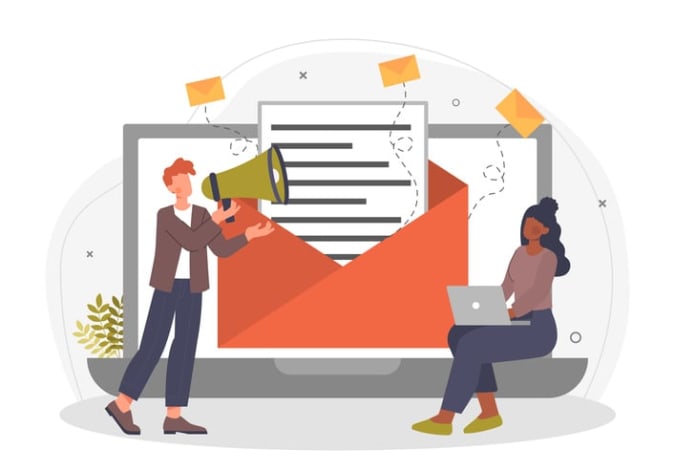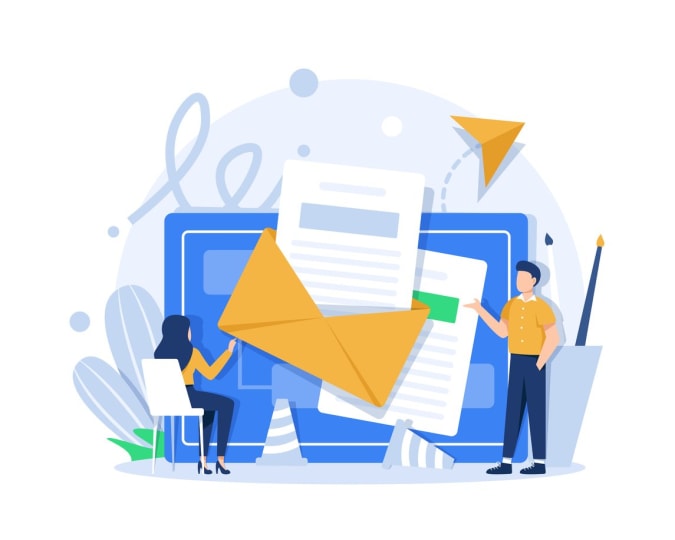In today’s fast-paced and interconnected world, email remains a vital tool for communication. Mastering email etiquette is crucial, as it reflects your professionalism and can make or break your relationships with clients, colleagues, and business partners. In this blog post, we’ll provide you with essential rules and tips for professionals to ensure your emails leave a lasting positive impression and help you achieve your goals.
Key takeaways
- Email etiquette is essential for professional communication and maintaining a positive relationship.
- Crafting clear subject lines, choosing the right greeting, structuring emails for clarity & readability, and using proper language & signatures are key elements of email etiquette.
- Being mindful of cultural differences and protecting confidential information can help foster successful outcomes when communicating via email.
The importance of email etiquette in professional communication

Clear, respectful, and efficient communication is reinforced by email etiquette rules, which are instrumental in fostering positive relationships and showcasing professionalism. Proper business email etiquette not only facilitates efficient communication in business emails but also helps you and your employer maintain a professional image, which is vital for success in today’s competitive business environment. By adhering to proper etiquette, you can ensure that your business interactions remain respectful and professional.
From crafting a clear subject line to properly addressing recipients using a professional email address and handling sensitive information, following proper email etiquette can lead to stronger relationships and increased trust among colleagues and clients. Hence, we will delve into these pivotal email etiquette rules and tips that will aid in enhancing your communication skills, making every professional email you send effective and professional.
Crafting a clear and concise subject line

Crafting a compelling subject line, an integral part of email etiquette, aids recipients in comprehending the email’s purpose and enhances open rates. A good subject line should provide a succinct overview of the email content and reference the project or update it pertains to. This not only grabs the recipient’s attention but also ensures they can quickly find the email in a cluttered inbox.
When crafting subject lines, consider the recipient and how to effectively pique their interest without being deceptive. Devote time and thought to create a clear and concise subject line, which will enhance the possibility of your email being read and responded to.
Choosing the right greeting
The selection of an appropriate greeting sets the email’s tone and shows respect for the recipient’s status and relationship, hence it is of great importance. In a formal business email, including the recipient’s name and a polite salutation is essential. Avoid informal greetings such as “Heya” or “Yo” and opt for professional greetings, like “Dear [Recipient’s Name]” instead.
Although some professionals may deem casual greetings like “Hey all” appropriate, it’s generally best to stick to more formal greetings in professional emails. This ensures your email strikes the right balance between friendliness and professionalism.
Structuring your email for clarity and readability
A well-organized email with clarity and readability simplifies the understanding of your message and encourages prompt responses. A professional email should comprise the following components:
- Subject line
- Salutation
- Content
- Valediction
- Signature
Each component plays a critical role in conveying your message effectively.
To enhance readability, follow these tips:
- Separate your message into distinct paragraphs, ensuring that each paragraph contains more than one word
- Focus on one key point per paragraph
- Start each paragraph with the most pertinent information
- Use bullet points or numbered lists to bring more structure to your writing if necessary
- Ensure proper punctuation, grammar, and spelling to maintain a professional demeanor and avoid misunderstandings.
In addition to being mindful of your email’s structure and language, keep the email body concise and to the point. This not only ensures your message is easily digestible but also demonstrates respect for the recipient’s time.
Maintaining a professional tone and language
Using a professional tone and language in your emails minimizes the chances of misinterpretation and displays professionalism. Avoiding negative words, humor, and sarcasm is crucial as they can cause misunderstandings and potentially harm relationships.
Instead, focus on framing your follow-up email positively by emphasizing benefits and improvements rather than failures and mistakes. This approach not only fosters a positive atmosphere but also encourages recipients to be more receptive to your message.
Perfecting your email signature

An impeccably crafted email signature, which includes key contact information, enhances the professionalism of your correspondence. A professional email signature should include:
- Your full name
- Job title
- Company name
- Company website
- Contact number
This ensures your recipients can easily reach you if necessary.
When designing your email signature, keep it relatively small, straightforward, and conservative. Avoid image-only signatures and ensure your signature is responsive to different devices and email clients. By perfecting your email signature, you’ll leave a lasting impression of professionalism on every recipient as you sign off.
Properly addressing recipients and using bcc
Properly addressing recipients is fundamental in showing respect and upholding professionalism. Using the recipient’s name and title, if applicable, can help build rapport and show that you’ve taken the time to familiarize yourself with their identity. If you’re unsure about the recipient’s name or title, take the time to do some research to avoid potential embarrassment or miscommunication.
Blind carbon copy (bcc) is another important aspect of email etiquette, as it allows you to include recipients whose identities must be kept confidential from other email recipients. Utilizing bcc is considered good email etiquette when emailing multiple individuals who are not familiar with one another, as it allows for the protection of their privacy.
However, be cautious when using bcc, as the misuse of blind carbon copy can be considered deceptive and impolite. Always consider the context and the recipients when deciding whether to use bcc in your email correspondence.
Handling attachments and links with care
Attachments and links should be handled with care to prevent cluttering inboxes and to ensure easy access to important files. Before sending an attachment, double-check it and consider whether the content can be pasted into the email body instead. If the attachment is necessary, compress it or attach it in a zip file to reduce the space it takes up in the recipient’s inbox.
When sending large files, consider the following:
- Upload the file to a cloud service, such as Google Drive or Dropbox
- Provide the recipient with a link to access the file
- This saves space in the recipient’s inbox and makes it easier for them to access and download the file.
Proofreading and double-checking your emails

Thoroughly proofreading and cross-checking your emails is essential to avert mistakes and preserve a professional appearance. Take the time to review your emails for clarity, tone, and accuracy before hitting send, ensuring they follow the correct email format. This can help you catch any spelling or grammar mistakes that might have slipped through.
Integrating tools like Grammarly can also be beneficial in ensuring accuracy in your email writing. By proofreading and double-checking your emails, you’ll ensure your message is communicated effectively and that your professional image remains intact.
Responding timely and appropriately
Prompt and fitting responses to emails are key to showing respect for the sender and keeping up with the tasks at hand. Different situations call for different response times, so it’s important to prioritize your email responses accordingly. For example, it is recommended to respond to emails from immediate team members within 12 hours and emails from colleagues in other departments within 24 hours.
In a customer-facing role, the expectation is even higher, with businesses expected to respond to emails within one hour or less. If you’re unable to provide a detailed response within the appropriate response window, it’s still important to acknowledge the email and let the sender know when they can expect a full reply.
Utilizing out-of-office replies when you’re unavailable can also help manage expectations and ensure recipients are aware of any delays in your response. By responding promptly and appropriately to emails, you’ll demonstrate professionalism and respect for your recipients’ time.
Being mindful of cultural differences and sensitivities
In our increasingly interconnected world, awareness of cultural differences and sensitivities is indispensable to prevent miscommunication and nurture stronger relationships. Cultural differences can manifest in various aspects of professional communication, including managing emails and phone calls, presentations, meetings, and more.
Being culturally sensitive and adaptable when engaging in cross-cultural communication can help ensure successful outcomes and contribute to building more meaningful connections with colleagues and clients from diverse backgrounds.
Protecting confidential and sensitive information
When sending emails, discretion is paramount in protecting private or sensitive information about yourself and others. Discussing sensitive topics or confidential information over email comes with risks, as potential leaks could be as simple as an inadvertent forward or cc.
To protect against potential unauthorized disclosure and uphold the integrity of the relationship between parties, refrain from sending confidential or private information via email. Instead, consider using secure communication channels or discussing sensitive topics in person or over the phone.
Navigating the use of emojis and abbreviations
When using emojis and abbreviations in professional emails, it’s important to strike a balance between maintaining a friendly tone and professionalism. Although 63% of people deem the use of emojis in emails to be acceptable, it’s generally best to refrain from using them in professional emails, as they can be perceived as unprofessional and interpreted differently by different individuals.
When it comes to using shorthand, it’s typically appropriate in specific situations, such as when corresponding directly with a colleague or client with whom you have a close relationship. By navigating the use of emojis and abbreviations carefully, you’ll be able to maintain a balance between friendliness and professionalism in your email communication.
Summary
In summary, mastering email etiquette is crucial for professionals looking to maintain a positive image and foster strong relationships with their colleagues and clients. By following the essential rules and tips discussed in this blog post, you can ensure your emails are clear, respectful, and effective, helping you achieve your goals and succeed in today’s competitive business landscape. If you want to forgo the stress of email altogether, consider using a platform such as Kumospace, which has a team chat feature in order to eliminate the need for emails altogether.
Frequently Asked Questions
Do use a professional salutation and signature, check your grammar and tone, avoid responding immediately in the heat of the moment, and use BCC when necessary; don't forward chain emails, send an email when angry or upset, copy everyone on every email, or use informal language.
Email etiquette is the use of appropriate language, conventions, and formality in an email. It is important to communicate your purpose or message, keep emails concise and focused, use proper grammar and spelling, and ensure that your tone is professional and respectful. Providing a clear subject line and using paragraphs and bullet points when necessary can also enhance readability.
The 4 Email Rule states that if an internal email chain has gone back and forth four times between two people without a resolution, they should pick up the phone and call each other to resolve the matter.
The most important aspect of email etiquette is clear and respectful communication that demonstrates professionalism and fosters positive relationships.
Improve the subject line of your emails by providing a succinct overview of the email content and referencing the project or update it relates to while using a professional tone.





